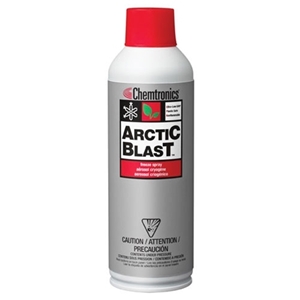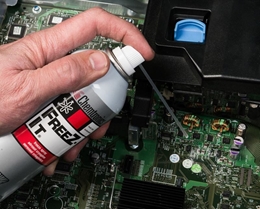
TDS
SDS (GHS)
Arctic Blast Freeze Spray
Arctic Blast™ Freeze Spray is the newest class of circuit coolants, specifically formulated to quickly cool surfaces while minimizing the use of global warming compounds. It is formulated with HFO-1234ze, a new material that has a significantly lower global warming potential (GWP) than previously used materials. Arctic Blast™ Freeze Spray is nonflammable, residue-free and provides fast cooling action.
Features & Benefits
- Pinpoint spray that isolates individual components without freezing surrounding areas
- Rapidly cools components to -49 °F/-45 °C
- Filtered to 0.2 microns - Ultra high purity
- Low GWP of <1 - Low global warming impact when compared to typical freeze sprays
- Plastic Safe - Will not harm plastics when liquid is sprayed onto circuits
- Non-Flammable - Safe to be used around electronics
- Low Toxicity - Safe to be used in a well ventilated area
- Filtered to 0.2 microns - Ultra high purity, cleanest spray
- Short Atmospheric lifetime - Material will break down and be eliminated from the atmosphere quickly
Applications
- Cool Equipment for Testing
- Dissipate Heat While Soldering or Desoldering
- Isolate Thermal Intermittent Components
- Test Circuit Traces for Continuity and Stress Fractures
- Track Intermittent Failures and Shorts
| Shipping Name | Consumer Commodity ORM-D |
|---|




